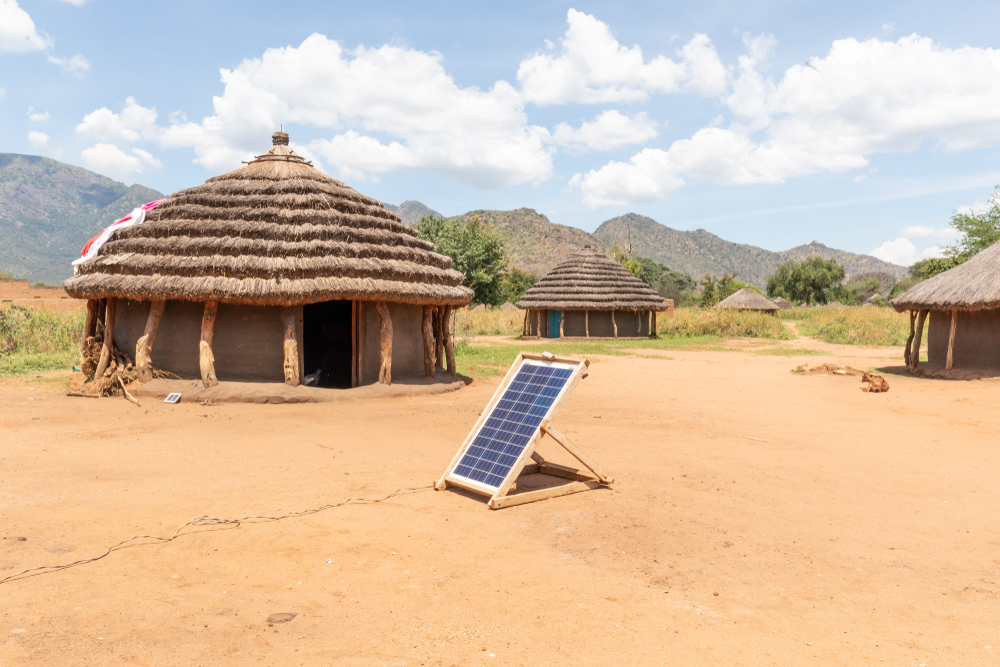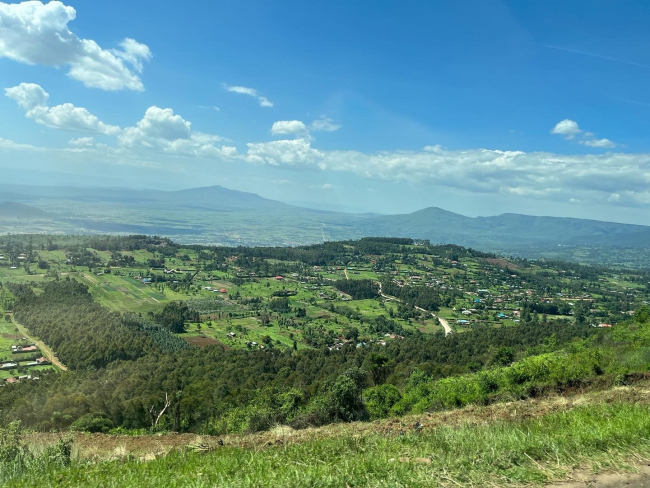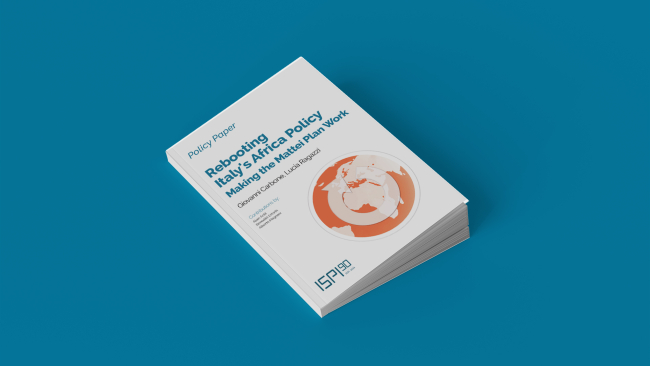Green Recovery for Sub-Saharan Africa: Boosting Sustainable Electrification

If sub-Saharan Africa followed the same model of economic development as the rest of the world, focused on the growth of carbon intensive industries, cities and infrastructures, it would seal the planet's climate future. Africa’s emissions today are among the lowest per capita in the world: 0.8 tons/capita.

If Africa produced in 30 years the same levels of CO2 per capita as India and China today (respectively 2 tons/capita and 7.2 tons/capita), it could alone emit between 4 gigatons (Gt) and 17 Gt of CO2 in 2050, or the combined emissions of China, the United States and Europe today. It is therefore essential that the development of sub-Saharan Africa be carried out in a sustainable manner.
Sub-Saharan Africa will face the harshest consequences of global warming
Despite its very low historical contribution to global warming, the African continent will face its harshest consequences. According to statistics from the International Energy Agency (IEA), in 2018, the entire continent emitted only 3.6% of global carbon dioxide (CO2) emissions, or 1,224 million tons (mt) of CO2. Yet the rise in temperatures is expected to be higher on the African continent: up to one and a half times higher than the world average.
Rising sea levels are already threatening coastal areas where the most populous cities in sub-Saharan Africa, such as Lagos, are located. Inland, changes in rainfall patterns linked to global warming have adverse effects on soils. Longer, more intense and more frequent droughts, followed by torrential rains, contribute to land erosion and floods. Population growth puts pressure on access to natural resources, leading to overgrazing and deforestation. Wood remains the first source of primary energy in sub-Saharan Africa: more than 780 million people depend on it for cooking. These phenomena contribute to the progression of desertification of the continent's soils and make populations more vulnerable to climate hazards. In urban areas, a study has shown that by 2090, more than a third of Africa's urban population could be affected by extreme and even fatal heat waves.
Therefore, along with the goals related to the attenuation of climate change, the continent has to adapt. The development of the continent’s energy sectors and more specifically electricity sectors, are essential in both protecting the continent against the adverse effects of global warming and in fostering green and inclusive growth.
Accelerating economic and industrial development to address population growth
The economic development of sub-Saharan Africa is a necessity, first to lift populations out of the endemic poverty in the region. Out of 780 million people living in the world in a situation of extreme poverty, with less than $ 1.90 a day, more than half are in Africa. In addition, the continent must cope with significant demographic growth.
According to UN projections, the sub-Saharan region’s population will almost double in less than 30 years to reach 2.1 billion by 2050, compared to 1.1 billion today. In addition to the issues of access to healthcare and education that population growth will create, the continent will therefore need to provide jobs for the young people who are already entering the labor market in ever increasing numbers each year. According to International Monetary Fund (IMF) projections, 20 million new jobs will have to be created in sub-Saharan Africa each year for the next two decades just to absorb the new entrants in the labor market.
The industrialization of sub-Saharan Africa could make it possible to absorb this population growth, while putting the region on a path of more sustained growth. But its development is severely limited, notably by the weaknesses of sub-Saharan electricity sectors.
The financial challenge of developing the continent’s renewable energy potential
Of the approximately 1 billion people in the world who do not have access to electricity, nearly 600 million are in sub-Saharan Africa, or 47.2% of the population. Also, the obsolescence and mismanagement of many existing power grids in sub-Saharan Africa are major barriers to industrialization and job creation. Power outages due to the poor condition of grids are common and many sub-Saharans face significant hours of power outages each month. Nigeria is an extreme case: in 2014 the country had more than 32 power outages per month, each lasting around 12 hours.
This inadequacy of sub-Saharan power grids has a significant negative effect on economies, representing on average a cost from 1 to 5% of GDP depending on the country. Auxiliary generators are the preferred means for dealing with grid failures and more than half of businesses have or share a generator in sub-Saharan Africa. Again, Nigeria is an extreme case: the aggregate installed capacity of diesel generators in the country is estimated to be around 10 to 15 GW, or two to three times the available capacity of the central grid at around 6 GW for 2019. Yet sub-Saharan Africa is endowed with colossal renewable electricity production potential. The potential hydropower production capacity would amount to more than 1,840 terawatt-hours (TWh) per year, which is almost four times the annual consumption of France. The region would have a theoretical capacity of 60 million TWh per year of solar energy.[1] However, in 2018, according to statistics from the IEA, only 5.2 TWh and 136 TWh of electricity were produced from photovoltaic systems and hydroelectric complexes, i.e. in the first case a use of less than 0.01% of its theoretical potential and in the second, less than 8%.
Even though renewable energies are competitive with fossil-fueled power plants, the capital-intensive nature of these investments for the private sector requires that a payment certainty be provided by public utilities over the entire life of the renewable plant, on a time horizon of more than 25 years. The risks perceived by investors are significant, as sub-Saharan African electricity utilities are in poor financial conditions and make these projects particularly risky. Only a rapid improvement in the financial viability of electricity utilities would allow for the large-scale deployment of renewables on the continent and therefore put Africa on the path of sustainable economic development.
Ifri’s Center for Energy & Climate recent analysis shows that given the difficulties public utilities have in expanding their sector, consumers are tending to reappropriate access to electricity, even in areas covered by the grid. This is an underlying trend that will have an impact on the sector’s finances and therefore on its ability to develop in a sustainable manner. In recent months, ideas to help Africa emerge from the economic crisis have flourished on the other side of the Mediterranean. For example, the French president recently announced that Africa needed a "Marshall Plan". In the case of the electricity sectors, however, this cyclical response would come up against the sector's structural difficulties. In this context, a cancellation or a moratorium on African debts would be more relevant, if subject to strict conditions for improving governance in the sector. Indeed, only a significant improvement in the financial situation of utilities would allow Africa to exploit its immense renewable potential.
[1] Z. Liu, Global Energy Interconnection, Amsterdam, Academic Press, 2015.
This article is part of the dossier "Hopes and Realities: A Green Recovery for Africa?" published by ISPI and available on the ISPI website

Available in:
Regions and themes
Share
Related centers and programs
Discover our other research centers and programsFind out more
Discover all our analysesAnglo-Kenyan Relations (1920-2024) : Conflict, Alliance and a Redemptive Arc
This article provides an evidentiary basis for postcolonial policy in its analysis of Anglo-Kenyan relations in a decolonization era.
When City Diplomacy Meets Geopolitics: A Framework to Help Cities Navigate Geopolitical Risk
Crises and the increasing polarization of international relations make political risk analysis an indispensable resource for internationally active public and private entities.
The United Nations Mission in Congo or the exemplary uselessness of the United Nations peacekeepers
During the M23 conflict in 2012-2013 in the Democratic Republic of Congo (DRC), the United Nations (UN) took the diplomatic initiative (by initiating the Addis Ababa agreement) and the military initiative (by launching a coordinated counter-offensive with the Congolese army). Since the resurgence of this conflict in 2022, the United Nations, which still has more than 10,000 peacekeepers deployed in eastern DRC, no longer plays any role.
Rebooting Italy's Africa Policy: Making the Mattei Plan Work
Against the backdrop of increasing anti-French rhetoric across parts of Francophone Africa, the relative failure of the counterinsurgency operation in the central Sahel (Operation Barkhane) and diplomatic rifts with several Sahelian countries, Paris has been rethinking its relationship with the continent for several years now. As a former imperial power that has seen its colonial domain in Africa gain independence between 1956 (Morocco-Tunisia) and 1977 (Djibouti), France has invented two successive roles for itself in Africa since 1960, particularly in French-speaking sub-Saharan Africa.








